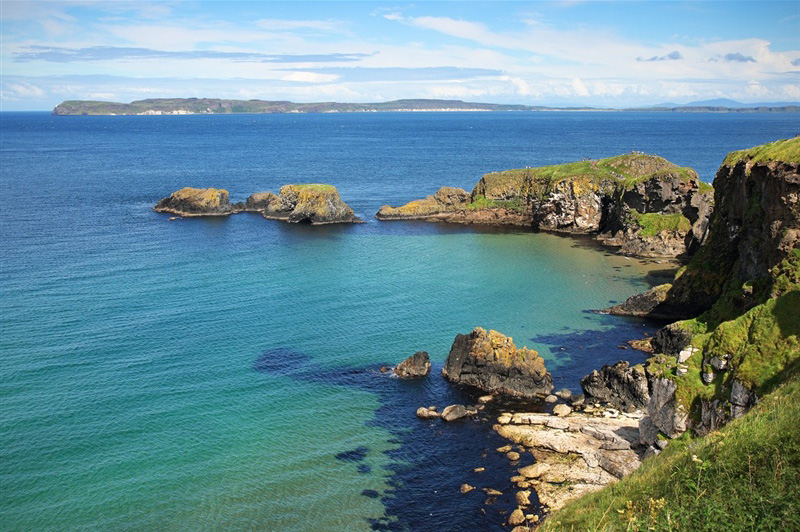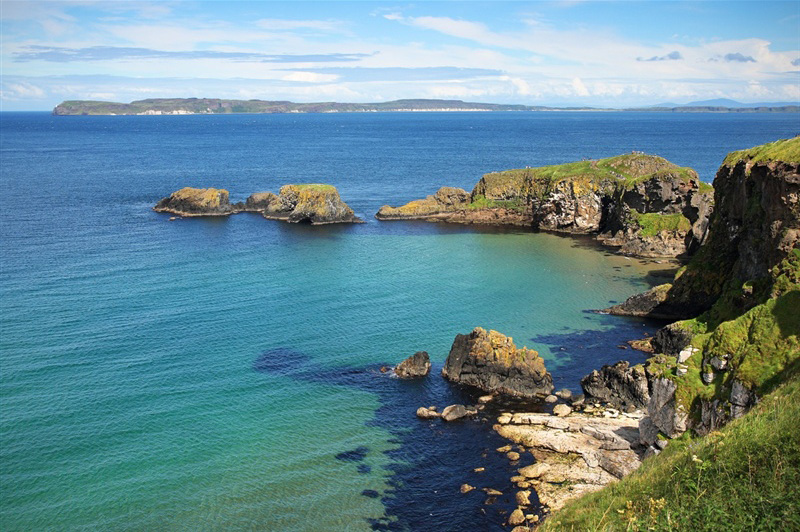
The Causeway Coast Way is a spectacular long-distance coastal trail located in County Antrim, Northern Ireland. Stretching approximately 33 miles (52 km) between Ballycastle and Portstewart, this route is famed for its dramatic cliffs, ancient castles, golden beaches, quaint villages, and of course, the world-famous Giant’s Causeway. Whether you walk it over two to four days or explore shorter sections, this route showcases the wild, untamed beauty of Northern Ireland’s Atlantic shoreline.

What sets the Causeway Coast Way apart is its unique combination of natural wonder, myth and legend, and accessible trail sections, which offer both breathtaking views and cultural depth. With its UNESCO World Heritage status and filming locations from Game of Thrones, it’s no surprise this walk is rapidly gaining global recognition among adventurers, nature lovers, and history buffs alike.
Trail Overview
- Total Distance: ~52 km (33 miles)
- Typical Duration: 2–4 days
- Starting Point: Ballycastle
- End Point: Portstewart
- Difficulty: Easy to Moderate (some sections involve road walking and steep ascents)
- Waymarking: Yellow arrows with the International Appalachian Trail (IAT) logo
While the official trail starts in Ballycastle, many walkers choose to begin at Cushendun or Carrick-a-Rede, and the route can also be walked in reverse. Along the way, you’ll encounter a variety of landscapes—from sheer cliffs and sea stacks to rolling farmland, rocky coves, and forested glens.
Day-by-Day Itinerary
Day 1: Ballycastle to Ballintoy (~13 km / 8 miles)
Starting in the charming seaside town of Ballycastle, the trail heads west along the coast toward Ballintoy, offering immediate immersion into the region’s natural splendor.
Highlights:
- Fair Head Cliffs: Towering over 600 feet, these are some of the highest sea cliffs in Northern Ireland. They offer panoramic views of Rathlin Island and, on a clear day, Scotland’s Mull of Kintyre.
- Carrick-a-Rede Rope Bridge: An iconic experience. The 20-meter rope bridge spans a chasm between the mainland and a tiny island used historically by salmon fishermen. It’s not for the faint of heart but is entirely worth it.
- Ballintoy Harbour: A beautiful and rugged little port, also recognized as a filming location for Game of Thrones. Its basalt columns and rocky shoreline make it a photographer’s dream.
Day 2: Ballintoy to Bushmills (~18 km / 11 miles)
This leg includes the most celebrated natural attraction of the route—the Giant’s Causeway—as well as awe-inspiring cliff-top walking.
Highlights:
- White Park Bay: A sweeping arc of golden sand backed by dunes and limestone cliffs, often home to grazing cattle and a nesting spot for seabirds.
- Giant’s Causeway: A UNESCO World Heritage Site, this surreal landscape features around 40,000 interlocking basalt columns created by volcanic activity over 60 million years ago. The site is steeped in myth—the legend of Finn McCool, a giant who built the causeway to fight his Scottish rival, adds a layer of folklore to the geology.
- Dunseverick Castle: The ruins of this ancient castle sit on a dramatic outcrop overlooking the sea. It was once a royal site in Gaelic Ireland and visited by Saint Patrick.
- Bushmills Village: Home to the Old Bushmills Distillery, the oldest licensed whiskey distillery in the world (licensed in 1608). An ideal place to end the day with a tour and a well-earned dram.
Day 3: Bushmills to Portstewart (~21 km / 13 miles)
The final day is a gentler stretch, passing through long beaches, picturesque towns, and wide-open coastal views.
Highlights:
- Portballintrae: A quiet seaside village, perfect for a short break before heading west.
- Runkerry House and Beach: With the Atlantic to your left and scenic hills inland, this part of the walk is serene and ideal for reflection.
- Portrush: A lively resort town known for its beaches, golf courses, and restaurants. Worth stopping for a bite to eat or a sea dip.
- Portstewart Strand: The wide beach leads directly into the town of Portstewart, with its elegant Victorian promenade and bustling cafés. The National Trust manages this area, preserving its natural beauty and wildlife.
Flora, Fauna, and Geology
The Causeway Coast is a treasure trove for naturalists. The basalt cliffs and limestone headlands form ideal habitats for a diverse range of species.
- Birdlife: Puffins, kittiwakes, fulmars, razorbills, and oystercatchers are common sightings, especially around Rathlin Island and the cliffs of Fair Head and Carrick-a-Rede.
- Marine life: Dolphins, porpoises, and even the occasional basking shark can be seen offshore.
- Flora: Depending on the season, the cliffs and coastal paths are adorned with sea thrift, wild thyme, harebells, and orchids.
The unique geological formations of the Giant’s Causeway are central to the area’s identity. Hexagonal basalt columns formed by volcanic eruptions are perfectly interlocked, creating a scene that’s as mysterious as it is majestic.
Myth, Legend, and Cultural Heritage
What makes this trail so compelling is the way it blends natural wonders with Irish mythology and historical sites:
- The Legend of Finn McCool: Perhaps the most enduring tale of the Giant’s Causeway. According to myth, the Irish giant Finn McCool constructed the causeway to reach Scotland and battle the giant Benandonner. The story blends humor and grandeur, a hallmark of Celtic folklore.
- Dunluce Castle: Though just off the main trail, it’s well worth a visit. Perched precariously on a cliff edge, this 13th-century ruin offers insight into Northern Ireland’s turbulent past. Legend says the castle kitchen once collapsed into the sea during a storm.
- Saint Columba’s Legacy: Christianity’s roots in the region are deep, with numerous ancient churches, holy wells, and ruins scattered along the way.
Practical Information
Accommodation
- The route passes through or near several towns and villages offering a range of B&Bs, guesthouses, hostels, and boutique hotels.
- Camping is possible, though wild camping is restricted. Campers should stick to designated sites or ask landowners for permission.
Transport
- The Causeway Coast Way is well served by public transport, particularly buses that link Ballycastle, Bushmills, Portrush, and Portstewart.
- For those driving, car parking is available in most towns along the trail, and some luggage transfer services cater to walkers.
When to Go
- Best months: May to September.
- Summer provides the longest daylight hours, ideal weather, and open visitor attractions.
- Spring and autumn offer fewer crowds and vibrant landscapes.
Tips for Walkers
- Footwear: Sturdy, waterproof hiking boots or trail shoes are recommended.
- Weather: Be prepared for rapid weather changes—carry waterproof layers even on sunny days.
- Tide Times: Be aware of tides, especially around beaches and coves.
- Safety: The trail is generally safe and well-marked, but care should be taken near cliff edges and rocky sections.
Conclusion: An Unforgettable Coastal Experience
The Causeway Coast Way is a walk that stirs the soul. It offers a seamless fusion of natural wonder, cultural heritage, and physical challenge, all set against the soundtrack of crashing waves and sea breezes. Whether it’s the primal beauty of the Giant’s Causeway, the thrill of the Carrick-a-Rede Rope Bridge, or the quiet reflection of walking across a sun-dappled headland, the trail leaves a deep and lasting impression.
Ideal for solo trekkers, couples, or walking groups, the Causeway Coast Way is not just a walk—it’s a journey through time, myth, and awe-inspiring scenery.
If you’re seeking your next coastal walking adventure, put this trail at the very top of your list. You won’t be disappointed.

